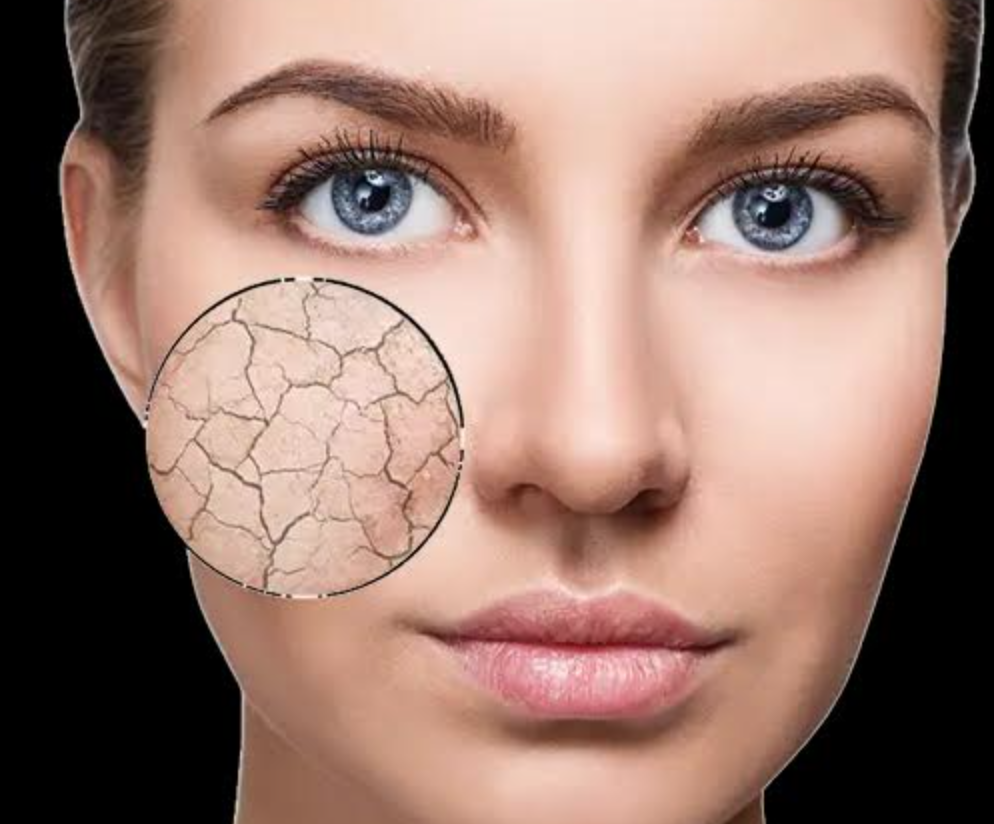
I often get told by new patients that they suffer with “dehydrated skin”, but not “dry skin”. So, in this blog post I am going to dig deeper into this statement and do some myth-busting!
Let’s start by looking at what actually causes dry skin on a cellular level. So, the underlying cause for dry skin can be an insufficient production of natural lipids (oils) and/or water-holding substances (e.g. NMF) in our skin. The consequence of that is that our skin can’t hold on to its natural water content sufficiently and loses too much water via (invisible) evaporation. You see, our skin evaporates water 24/7, it’s called ‘perspiratio insensibilis’ (also known as TEWL, transepidermal water loss). In contrast to sweating, this is invisible, as the name says.
Excessive water evaporation however happens when the barrier function of the skin is impaired, for example because the skin doesn’t contain enough natural lipids and/or water-holding substances. This pathologically increased evaporation of water then leads to dehydrated skin, which means that the water content of the stratum corneum is too low.
So, you can see that the two terms ‘dry’ and ‘dehydrated’ skin can’t really be separated, as the lipid content of the skin and the water content of the stratum corneum are interwoven.
Sometime, the term ‘dehydrated skin’ is used to describe a more extrinsically caused reduction of water content in the stratum corneum (e.g. dehydration of the skin caused by excessive cleansing), while ‘dry skin’ may be used to describe a genetic predisposition for dry skin (for examples in individuals with a tendency for eczema). However, the endpoint in each case is a reduction in the water content in the stratum corneum (that’s what gives that uncomfortable feeling of dry/dehydrated skin). Specifically, it’s when the water content of the horny layer falls below 10-15%, that our skin feels dry/dehydrated. Symptoms may include a tight feeling, as well as a rough and/or flaky appearance. When the skin becomes very dry/dehydrated, it can even become itchy, red and inflamed (‘dryness eczema’).
But even in the example of extrinsically ‘dehydrated’ skin caused by excessive cleansing of the skin, the mechanism is similar to hereditary dry skin caused by lack of lipids, as the cleansing process striped away lipids from the skin, with the consequence of an impaired barrier function with increased evaporation of water (TEWL), which subsequently leads to reduction of the water content in the horny layer of the skin.
In summary, there is no clear and universally accepted differentiating definition between ‘dry’ and ‘dehydrated’ skin. As dermatologists, we therefore tend to not distinguish between ‘dry’ and ‘dehydrated’ skin, as the mechanisms are so interwoven and can’t be strictly separated.
Rather than distinguishing between ‘dry’ and ‘dehydrated’ skin, which is over-simplistic and also not very helpful in everyday life, I much prefer to divide the skin into the following five skin types. You will see below that I do have two categories for ‘dry skin’, however, my distinction lies in whether or not the person suffers from breakouts together with their dry skin. This distinction is very important as ‘dry skin without breakouts’ needs a very different skincare regime compared to ‘dry skin with breakouts’ (the latter is increasingly common by the way, especially in adult women).
THE EUDELO SKIN TYPING SYSTEM:
· Normal skin
· Oily skin
· Combination skin (typically oily t-zone and dry cheeks)
· Dry skin without breakouts
· Dry skin with breakouts
With regards to treating dry skin, we need to enable the skin to hold water better, which can be achieved via different means, for example by supplying lipids or via supplying water holding substances. And while ‘dry skin without breakouts’ improves with lipid-rich skincare, ‘dry skin with breakouts’ must strictly avoid heavy skincare. Instead we can use no-oily water-holding ingredients such as hyaluronic acid. In clinic treatments such a Profhilo can also greatly help hydration levels in the skin, as can certain specialist supplements.
Lastly, it’s important to remember that what feels like ‘dry’ skin, is not always true dryness/dehydration. That’s because a dry, tight feeling can also be a sign of micro-inflammation, as we see in rosacea and seborrheic dermatitis. In these cases, slathering on rich moisturisers is also contraindicated, as they will make these conditions worse (although it may feel soothing). The solution is treating the micro-inflammation (with anti-inflammatory ingredients, ideally in prescription strength), not ‘numbing’ the sensation with heavy skincare.
It’s quite complicated, so best to let a cosmetic dermatologist or Eudelo Skin Coach put a tailored skincare regime together, in particular if you suffer with ‘dry skin with breakouts’, which is by far the most difficult skin type to manage!
Whether you have a medical skin condition which needs treatment or simply want to look your very best, our specialised dermatology team will help you achieve the very best result.

